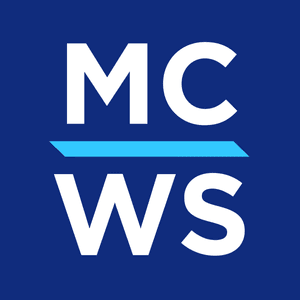Note: This information is from 2017 but much has changed since then. Please be sure to discuss your unique financial situation with your McKinley Carter Advisor or another trusted professional.

For those age 70 ½ or older who are thinking about their year-end Required Minimum Distributions, you may want to consider using the QCD charitable gift option.
Donations by cash or check are the most common methods of year-end giving to charity. My observation has been that as December (year-end) quickly approaches, many of us become overwhelmed by the tasks associated with the time of year; and, unfortunately, thoughtful planning around year-end charitable giving ends up not being a priority.
However, for those age 70 ½ or older who must consider a year-end Required Minimum Distribution (RMD), there is an attractive charitable gift giving option to consider using what’s called a Qualified Charitable Distribution (QCD).
What is a QCD?
A QCD is a direct transfer of funds from your Individual Retirement Account (IRA) custodian, payable to a qualified charity. QCDs can be counted toward satisfying your RMD for the year, if certain rules are met. In addition to enjoying the benefits of giving to and supporting a favorite charity, a QCD provides a tax advantage by excluding the amount donated through the QCD transfer from your taxable income.
What do Donors need to know?
- Distributions must come only from an IRA. Distributions from active SIMPLE IRA plans, active simplified employee pension (SEP) plans, or employer-sponsored retirement plans are not eligible for QCD treatment.
- Transfers must be made directly to the qualified charity and can amount to up to $100,000 per year. The transfer must be accomplished by the IRA trustee or custodian directly to qualified charities.
- Sponsoring charities of donor-advised funds, as well as their private foundations and supporting organizations, do not qualify for the QCD.
- The QCD is automatically omitted from your adjusted gross income (AGI). Correspondingly, the charitable gift made by the QCD is not an allowable itemized deduction. The standard deduction, however, is not impacted by the QCD’s exclusion from income.
- If you are considering a donation from your IRA, it is recommended that you discuss the potential benefits of a QCD with your financial/tax advisor. Don’t forget to ask about how state income taxes are impacted.
- The QCD tax legislation was made permanent on December 18, 2015 as part of the Consolidated Appropriations Act of 2016.
What do Charities need to know?
- The charity’s development office would be wise to research its year-end giving trends to identify those donors who both meet the age requirements (70 ½ or older) and give significantly. Reach out to these eligible donors as they may not know the benefits of giving via the QCD.
- Consider creating a recognition society just for donors making gifts via the QCD. Giving societies will build a sense of community among these donors and hopefully influence others to consider a QCD gift to support your organization.
- If you have donors contributing QCDs, ask permission to highlight their story in your newsletter. Focus your article on the program they supported, the donor’s passion behind this work, and the benefits they received by making a QCD.
- While year-end is the optimal time to promote the option of donating via the QCD, this gift vehicle should be promoted throughout the year. Furthermore, this strategy should be considered for all the organization’s needs – from general, unrestricted support to specific campaigns. Regardless of the timing and purpose of the gift, it is advisable to consult a financial advisor or accountant when working with donors using a Qualified Charitable Deduction.
